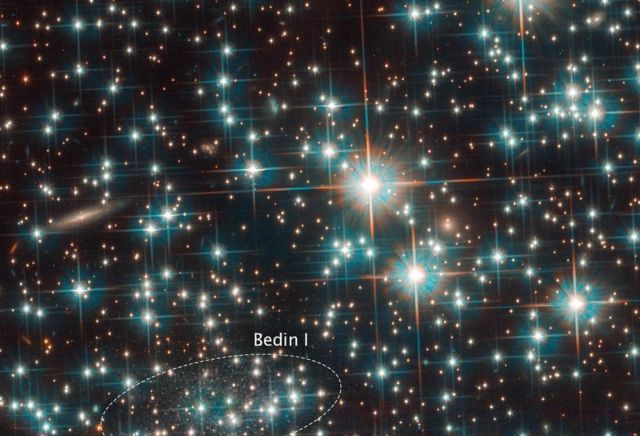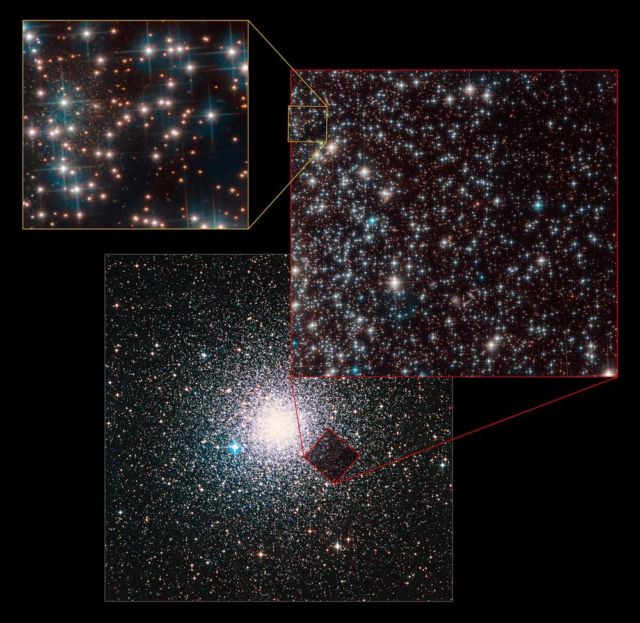Astronomers using Hubble accidentally discovered a dwarf galaxy in our cosmic backyard, only 30 million light-years away.
Astronomers using the NASA/ESA Hubble Space Telescope to study some of the oldest and faintest stars in the globular cluster NGC 6752 have made an unexpected finding. The aim of their observations was to use these stars to measure the age of the globular cluster, but in the process they made an unexpected discovery.
Above, image credit: NASA, ESA and L. Bedin (Astronomical Observatory of Padua, Italy)
In the outer fringes of the area observed with Hubble’s Advanced Camera for Surveys a compact collection of stars was visible. After a careful analysis of their brightnesses and temperatures, the astronomers concluded that these stars did not belong to the cluster — which is part of the Milky Way — but rather they are millions of light-years more distant.
This composite image shows the location of the accidentally discovered dwarf galaxy Bedin 1 behind the globular cluster NGC 6752. Credit: ESA/Hubble, NASA, Bedin et al., Digitized Sky Survey 2
Our newly discovered cosmic neighbour, nicknamed Bedin 1 by the astronomers, is a modestly sized, elongated galaxy. It measures only around 3000 light-years at its greatest extent — a fraction of the size of the Milky Way. Not only is it tiny, but it is also incredibly faint. These properties led astronomers to classify it as a dwarf spheroidal galaxy.
source Hubble







Leave A Comment